Which Sugars are Toxic? A List.
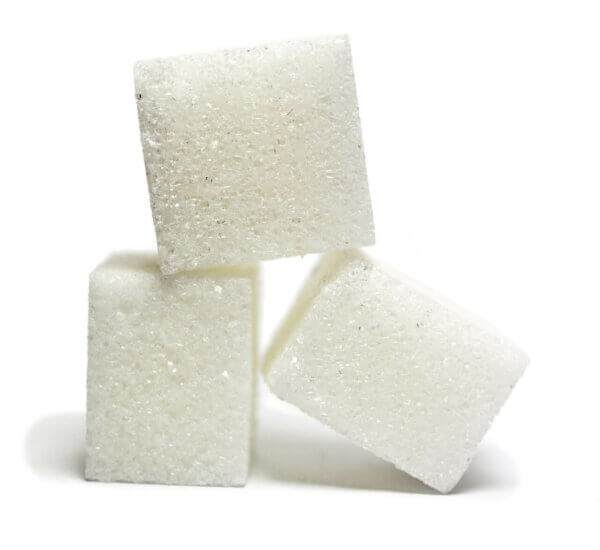
I had been meaning to do a post on sugar for some time, as I had no idea which sugar was ‘good’ or ‘bad’ in the health food store any longer. Then in April, the NY Times came out with the article “Is Sugar Toxic” where I learned that all added sugars are bad! Yet again, the clear message is anything in quantity is unhealthy, but because sugar is so prevalent in our food system, it is very easy to step over the line.
The Recommended Maximum Dose of Sugar
The World Health Organization recommends that we limit our intake of added sugars to no more than 10% of total calories. That comes to about 50 grams of sugar, or the equivalent of 4 tablespoons of granulated sugar for a person eating 2000 calories a day.
One tablespoon of granulated sugar is equal to about 12 grams. The American Heart Association would like to see this figure at 5% — no more than 100 calories a day from added sugar for most women, and no more than 150 calories a day for most men. That’s about 2 tablespoons of added sugar for women and 3 for men.
The Latest Research on Sugar
Research shows that sugary liquids in quantity, in a short period of time, are poison to the body. Drinking sugar forces your liver to convert the fructose to dangerous fats. And drinking just one can of soda is all you need to get your daily maximum requirement of sugar!
So — soda and sweetened (and un-sweetened!) fruit juices are now considered the new poisons. (See chart below) If you are going to imbibe, it is much better to eat your sugar, versus drinking it. In vegetables and fruits, the sugars are mixed in with fiber, vitamins, minerals, enzymes, and beneficial phytonutrients, all which moderate any negative metabolic effects.
Is Table Sugar Toxic?
Sugar you buy at the store is about 50% fructose, 50% glucose. These two simple sugars—glucose and fructose—are processed by our bodies differently. Glucose is metabolized by just about every cell of our body. Fructose is metabolized by the liver. So, consuming fructose is a lot more work for your liver than consuming starch (glucose).
Plus, fructose metabolism is about twice as fast as glucose metabolism, thereby hitting your system faster and more furiously. And, what is hitting your system is triglycerides (fat in your blood), free fatty acids and LDL (bad) cholesterol. And unlike glucose, fructose does not cause the release of insulin from the pancreas, so it has no regulator. After eating 120 calories of glucose, one calorie is stored as fat. After 120 calories of fructose, 40 calories are stored as fat. Simply put liquid fructose = fat. Fructose (outside of whole fruits and vegetables) is bad! Watch the video ‘Sugar: The Bitter Truth‘ below.
What Happens If I Eat Too Much Sugar?
People who overindulge in sugar have fatty livers, high blood triglyceride levels, elevated LDL (bad) cholesterol, high uric acid levels, may develop insulin resistance and a state of chronic inflammation and have a greater risk of heart attack, kidney stones, high blood pressure, low bone mineral density and cancer. Not to mention dental cavities and depletion of vitamins and minerals. Our body’s need (but can also manufacture) glucose, but they do not ‘need’ fructose.
The Best Books To Help You Eat Less Sugar
Fat Chance: Beating the Odds Against Sugar, Processed Food, Obesity, and Disease by Robert Lustig
The Blood Sugar Solution Cookbook: More than 175 Ultra-Tasty Recipes for Total Health and Weight Loss by Mark Hyman, M.D.
The 21-Day Sugar Detox Cookbook: Over 100 Recipes for Any Program Level by Diane Sanfilippo, BS, NC
The New Sugar Busters by H. Leighton Steward, M.D. (and 3 other doctors)
So, how are we supposed to make the occasional pie or cake without feeling like we are poisoning our family? First the candidates:
- Ends in “ose” = a sugar.
- Ends in “itol” = a sugar alcohol
- Disaccharide = two sugars joined together
The Different Types Of Sugar
Agave
The highly processed pulp of a desert-dwelling succulent plant. Agave is high in fructose, different brands range from 56-92% fructose. It is about 33 percent sweeter than sugar. Very high fructose – steer clear.
Aspartame
Sold under the names Equal, NutraSweet, AminoSweet. 100% artificial chemicals! Artificial sweeteners = artificial reactions. Aspartame is now the most used artificial sweetener in the world. A University of Liverpool study showed that aspartame could be toxic to brain cells when mixed with yellow food coloring. Researchers have found that one harmful breakdown product of aspartame is formaldehyde.*
Barley Malt Syrup
Sprouted barley grains are dried quickly. Then the dried sprouts are slowly cooked so that they form a syrup. Digested slowly. About half as sweet as sugar. A molasses flavor.
Beet Sugar
Is derived from the refining of sugar beets. It is processed into sucrose. Beware of GM sugar beets.
Brown Sugar
Refined white sugar with a bit of molasses added back into it.
Cane Juice and Cane Syrup
Produced from squeezed sugar cane juice. It’s less refined and so has a bit more color and flavor from the sugar cane.
Coconut Palm
Unrefined, organic best. Although imported, it is sustainable because coconut palms grow in bio-diverse ecosystems, rather than huge mono-crop farms like sugar cane. 15 calories per teaspoon. Low glycemic level of 35. Lots of micro-nutrients.
Confectioners’ Sugar
Granulated white sugar ground into a fine powder, sometimes with a bit of cornstarch.
Corn Sweeteners and Corn Syrup
Made by milling corn to produce corn starch, then processing with enzymes and acids to yield corn syrup. May contain between 20% and 98% glucose. Also called “glucose syrup.” Still highly processed. HFCS is below.
Date Sugar
Derived from dates. Lots of fructose.
Demerara
Comes from pressed sugar cane that’s steamed. The water is evaporated out, leaving large and coarse crystals.
Dextrose
Another name for glucose.
Erythritol
A ployol (sugar alcohol) resembles sugar in consistency and taste but has a caloric value near zero. Since the human body does not have any enzymes that can break down erythritol, it is not metabolized and is excreted unchanged in the urine. Some erythritol is derived from yeast fed GM corn derivatives. Toxic to fruit flies. See more below under sugar alcohols. (Organic Zero, Truvia are brand names.)
Fructose
Fruit sugar that occurs naturally in honey, dates, raisins, grapes, apples, etc.. Now, most often fructose is produced from corn syrup. Fructose is 50% sweeter then cane or beet sugar. Fructose is metabolized by the liver. If liquid fructose is ingested quickly and in quantity the liver becomes stressed and therefore turns most all the fructose to fat. Fructose tends to promote an increase in triglycerides in the blood, which increases the risk of heart disease. Fructose also increases levels of uric acid in the body. Excess fructose causes a number of serious health issues. Dr. Robert Lustig calls fructose ‘evil’!
Fruit Juice Concentrate
Syrups made by heating fruit juices to remove their water, then treating with enzymes and filtering, then re-adding fruit flavors. Lots of fructose!
Glucose
Also known as dextrose. A simple sugar that is metabolized by most every cell in the body. Also called blood sugar because it circulates in your blood. It fuels your cells. The body keeps blood glucose in a set range, through careful administration of insulin. The pancreas makes insulin. Our cells cannot use glucose without the help of insulin. Most all carbohydrates contain glucose, either alone, as in starch and glycogen, or together with another monosaccharide, as in sucrose and lactose. Glucose is 20% less sweet than sugar.
Glucose Syrup
Any liquid starch consisting of carbohydrates. Also called corn syrup when its main ingredient is cornstarch. Can be made from any source of starch; corn, wheat, rice and potatoes are the most common sources. The main benefit of this syrup over regular granulated sugar is its non-crystallizing properties.
Granulated White Sugar
Also known as table sugar, or pure crystallized sucrose, made by processing raw sugar from sugar cane or sugar beets.
High Fructose Corn Syrup
Also called glucose-fructose syrup. A combination of fructose and glucose made by processing corn syrup. Enzymatic processing converts some of the corn syrup’s glucose into fructose to produce a desired sweetness. The resulting syrup is sweeter and more soluble. HFCS 55 (mostly used in soft drinks) is approximately 55% fructose and 42% glucose.
A recent University of Southern California analysis of popular sodas (all sweetened with HFCS) found that the percent of fructose can be as high as 65 percent. (Originally cited from “goranlab.com/pdf/Fructose%20fact%20sheet.pdf”) As much as 60% of the sugar consumed in the US is actually HFCS. A very controversial product. More than one study has detected unsafe mercury levels in HFCS. In a Princeton study rats given HFCS gained 48% of their body weight in fat, a much greater weight gain than rats fed sugar. This is the equivalent of a 200 pound person gaining 96 pounds. (Link)
High Maltose Corn Syrup
A highly processed corn syrup with a high maltose content. Maltose is two bonded units of glucose. No fructose is present at all, and it is very easy for the body to break down. Our bodies create an enzyme, maltase that easily breaks down maltose into glucose. (Link)
Honey
A mix of glucose, fructose and sucrose created from nectar made by bees. Honey typically has a fructose/glucose ratio similar to HFCS 55, as well as containing some sucrose and other sugars.
Invert Sugar
Used as a food additive to preserve freshness and create smoothness, this is sucrose broken down into its respective parts – fructose and glucose.
Jaggery
Is unrefined sugarcane or palm sap heated to 200 °C. It comes in blocks, bricks, cups or pastes. It contains up to 50% sucrose, up to 20% invert sugars, up to 20% moisture, and the remainder is made up of other insoluble matter such as wood ash, proteins and fibers. It is called Palm Sugar when made from the date palm or sugar date palm. Known by many names throughout the world such as tapa dulce and rapadura.
Lactose
Sugar that occurs naturally in milk. Derived from whey. Lactose is about 20% as sweet as sugar.
Maltodextrin
A highly processed powdered sweetener enzymatically derived from any starch, resulting in a mixture of Glucose, Maltose, Oligosaccharides and Polysaccharides. In the US, the starch is usually corn, rice or potato; in Europe, it is commonly wheat. Maltodextrin is easily digestible, being absorbed as rapidly as glucose, and might be either moderately sweet or almost flavorless. A good thickener.
Maltose (aka Malt Sugar)
Starch and malt broken down (mashed) into simple sugars and used commonly in beer, bread and baby food. Produced when amylase breaks down the starch of germinated seeds, such as barley. Maltose is a disaccharide where fructose is a monosaccharide. Maltose is one third as sweet as sucrose.
Maple Syrup
Boiled down maple tree sap. Barely processed, pure maple syrup is a good source of minerals like manganese and zinc. Keep your mind open to Grade B which could contain even more minerals than A. 17 calories per teaspoon.
Molasses
The thick, dark syrup that’s leftover when sugar beets or sugar cane are processed into granulated sugar. Black strap is loaded with vitamins, minerals and trace elements naturally present in the sugar cane plant and is a good source of iron, vitamin B6, potassium, calcium and magnesium.
Muscovado
Unrefined. Made by pressing sugarcane and then cooking it slightly before allowing it to dry. Full of molasses and minerals. A good substitute for brown sugar, tends to be sticky. Store in tightly sealed jar.
Rice Syrup (Brown Rice Syrup)
Derived by cooking down rice or rice flour with enzymes (usually from dried barley sprouts) to break down starches. The final product is 45% maltose, 3% glucose, and 52% maltotriose. The syrup breaks down rather slowly, providing more of a time-release energy flow than sugar. About 13 calories per teaspoon and is less sweet than sugar. Tastes like butterscotch or caramel.
Saccharin aka Sweet’n Low.
Artificial sweeteners = artificial reactions.
Sorbitol
Also known as glucitol, a sugar alcohol. See below…
Stevia
Also known as sweet leaf, sugarleaf. Stevia plants are dried and subjected to a water extraction process. 300 times sweeter than sugar with zero calories. Too good to be true – yes, a bitter aftertaste. Caution as to the brand Truvia – it contains a chemically modified stevia.
Sucanat (Brand, Sugar Cane Natural)
Made by crushing sugar cane, extracting the juice and heating. Sucanat still contains the cane’s natural molasses, it has a deep brown color and a molasses flavor. It can be substituted for brown sugar in any recipe.
Sucralose (aka Splenda, SucraPlus, Candys, Cukren, E955 and Nevella)
An artificial sweetener – C12H19Cl3O8. 600 times as sweet as table sugar, twice as sweet as saccharin, and 3.3 times as sweet as aspartame. Lots of steps of chlorination in its processing. Resistant to degradation, therefore persists in the environment.
Sucrose
The chemical name for granulated white table sugar which can be produced from either sugar cane or sugar beets. It is broken down during digestion into a mixture of 50% fructose and 50% glucose. Each molecule of sucrose eaten means a molecule of glucose goes straight to the blood and one of fructose goes straight to the liver. Sulfur dioxide is added before evaporation to bleach the sugar.
Sugar Alcohols
See below.
Tagatose
Milk sugar – 92 % as sweet as sugar yet with about 1/3 of the calories. Is made via a patented two-step process. In the first step, lactose is hydrolyzed to glucose and galactose. In the second step, galactose is isomerized to D-tagatose by adding calcium hydroxide. D-tagatose is then further purified by means of demineralization and chromatography. The final product is a white crystalline substance that is greater than 99 percent pure.
Only 15-20 percent of tagatose is absorbed in the small intestine. The major part of ingested tagatose is fermented in the colon by indigenous microflora, resulting in the production of short-chain fatty acids. The short-chain fatty acids are absorbed almost completely and metabolized. Therefore tagatose has a minimal impact on blood glucose and is very low calorie.* Brand names Shugr, Sweet Fiber, and TheraSweet.
Turbinado Sugar
(Also known as Sugar in the Raw) Is made by crushing sugar cane to squeeze out the juice. The cane juice is evaporated and spun in a centrifuge, or ‘turbine’, producing large crystals. It retains a bit more of the natural “impurities” and a slight molasses flavor.
Sugar Alcohols
Also know as polyols, derived from a plant sugar which is extracted by differing means, then reduced and then hydrogenated, then recrystallized. Part of their structure resembles sugar and part is similar to alcohol, yet they are neither sugar nor alcohol, they just resemble their molecular structure. Contain about 2.6 calories per gram. Occur naturally in plant products such as fruits, berries, starches, seaweeds.
Products which use sugar alcohols can be called “sugar free.” Each sugar alcohol acts differently in the body.
Erythritol
Glucose is liquefied then fermented with a yeast, then crystallized. Some erythritol is derived from yeast fed GM corn derivatives. Erythritol is absorbed into the blood stream via the small intestine and then excreted unchanged in the urine. Erythritol has very small molecules and so passes directly through the system without metabolizing. Since it never makes it to the large intestine, this sugar alcohol does not cause the bloating and gas that are often associated with other sugar alcohols. 70% as sweet as sucrose. Heat-stable. Toxic to fruit flies. Fles showed erratic motor control prior to death. (Organic Zero, Pyure and are brand names.)
Hydrogenated starch hydrolysates
HSH is made from starches (wheat, corn, potato) and then by using hydrolysis, dextrin is created. Hydrogenation then coverts the dextrins into sugar alcohols. 40 – 90 percent of the sweetness of sugar. HSH do not crystallize and are used in confections, baked goods and mouthwashes. Adds texture and increases viscosity.
Isomalt
Is made from sucrose. It is a mixture of gluco-mannitol and gluco-sorbitol. Isomalt is only partially digested in the intestines and behaves much like fiber in the digestive tract. Is 45-65 percent as sweet as sugar and does not tend to lose its sweetness or break down during the heating process. Isomalt absorbs little water, so it is often used in hard candies, toffee, cough drops and lollipops.
Lactitol
Made from milk sugar (lactose). Lactitol is partially absorbed as glucose by the body and the remaining amount is fermented in the large intestine. Therefore may cause distress in the large colon. 30-40 percent as sweet as sugar, but its taste and solubility profile resembles sugar so it is often found in sugar-free ice cream, chocolate, candy, baked goods, preserves and chewing gums.
Maltitol
Made by hydrogenation of maltose obtained from starch. 75-90% percent as sweet as sugar. It gives a creamy texture to foods. And since it is so like sucrose it is found often. Maltitol is slowly absorbed in the intestine and excessive consumption can have a laxative effect and produce intestinal gas, bloating, and diarrhea.
Mannitol
Is mainly extracted from seaweed for use in food manufacturing. Has 50-70 percent of the relative sweetness of sugar. Mannitol lingers in the intestines for a long time and therefore often causes bloating and diarrhea. Mannitol is found in a wide variety of natural products, including almost all plants. Mannitol is extracted by utilizing ethanol, water, and methanol to steam and then hydrolyze the raw material. Mannitol does not absorb moisture and is used to dust chewing gum to prevent it from sticking.
Sorbitol
Is manufactured from corn syrup. 50 percent as sweet as sugar. It is often an ingredient in sugar-free gums and candies. Is found naturally in fruits and vegetables. It has less of a tendency to cause diarrhea compared to mannitol but can also aggravate irritable bowel syndrome.
Xylitol
Is also called “wood sugar” and can be extracted from corncobs, birch wood, raspberries, plums, vegetables, mushrooms and some cereals. Xylitol has the same relative sweetness as sugar. It is found in chewing gums. Xylitol is produced by hydrogenation of the raw material, which converts the sugar into an alcohol. Tooth-friendly.
Sugars That I Recommend
After lots of research…the reduced list…(NOT taking glycemic levels into account)
Eat ALL in Moderation…
- Muscovado
- Jaggery
- Demerara
- Stevia
- Organic corn (or glucose) syrup (not high fructose!)
- Raw honey
- Maple Syrup
- Brown Rice Syrup
- Barley Malt Syrup
- Black Strap Molasses
- Unrefined (sustainably sourced) Coconut Palm
I’m to learn more about…and try Maltose aka Malt Sugar, and Tagatose.
Sugar: The Bitter Truth
Robert H. Lustig, MD, UCSF Professor of Pediatrics in the Division of Endocrinology, explores the damage caused by sugary foods. He argues that fructose (too much) and fiber (not enough) appear to be cornerstones of the obesity epidemic through their effects on insulin. Series: UCSF Mini Medical School for the Public. Long, but really interesting!!! A must watch.
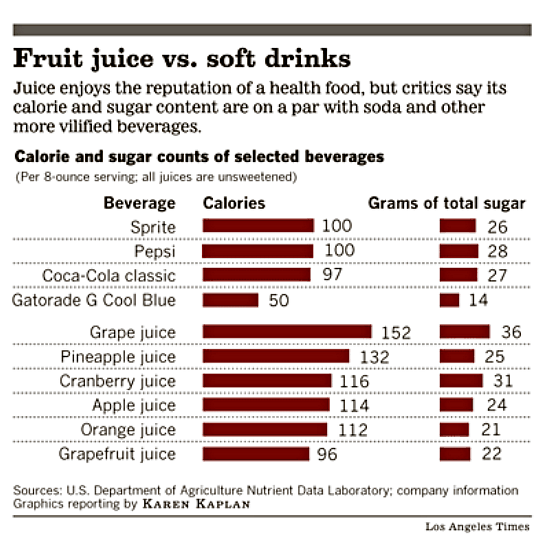
Via www.blastcapsdrink.com
And diet soda is worse. A 9-year study showed diet soda drinkers
had a 61 percent higher risk of stroke than those who reported no soda drinking. www.eurekalert.org
Learn More About Sugar
NY Times – “Is Sugar Toxic“
Soda Info Site: education.wichita.edu
USC Research Finds Sodas Sweetened with More High Fructose Corn Syrup Than Previously Assumed — keck.usc.edu
Sugar Alcohols: www.marksdailyapple.com
141 Reasons Sugar Ruins Your Health: nancyappleton.com


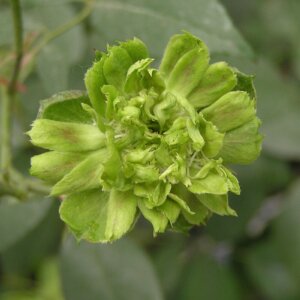






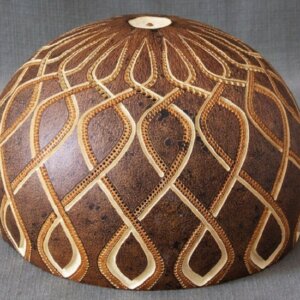

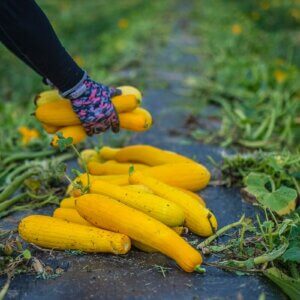


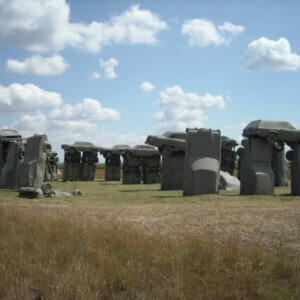
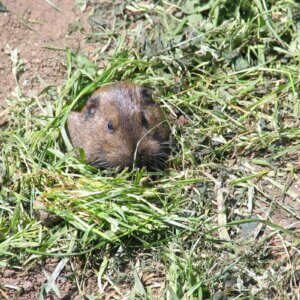


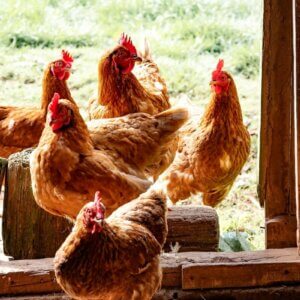

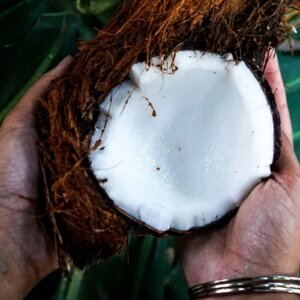
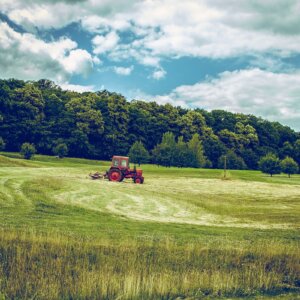
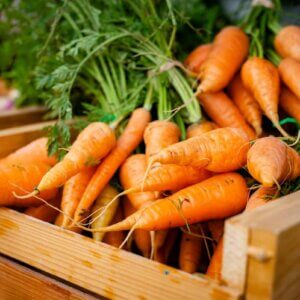



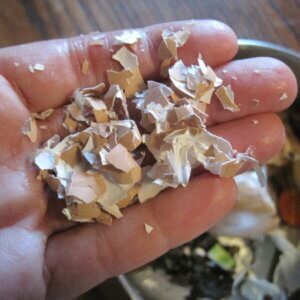


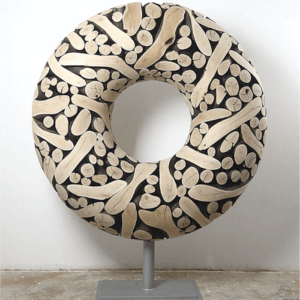










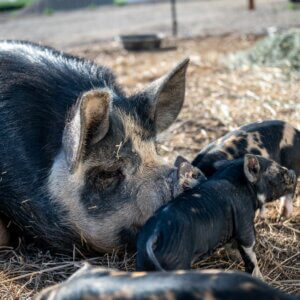
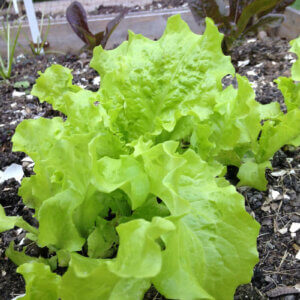
Try this
dear sir thanks for your information about the sugar toxic i have the new formula for all of different age in men and woeamen for example i preapareted the mixe of date and apple on shape round and i want send to the market . i dont know the sugar available at this furit is suitible for consumer or not the percentage mixe is 50 to 50 please guide me
Table sugar is about 50% fructose, 50% glucose.’ Contradicted by other parts of this article, and just plain wrong. As stated later, ‘It (sucrose); is broken down during digestion into a mixture of 50% fructose and 50% glucose.’
Your comment that palm oil is not plantation grown is incorrect. Palm oil plantations are one of the leading reasons for rampant deforestation in Borneo and other Southeast Asian locations. Devision of wild forest areas due clear cutting to grow coconut palms is a direct cause for the impending extinction of the urangotang and other species. After double checking these comments, you may wish to revise that part of your list of sugars etc.
BIOENERGY RIBOSE (TM) (NON-GMO D-RIBOSE)
please tell me about this sugar
THANK YOU
WALTER
I was ignorant as to Ribose used as a supplemental sugar until your question…
RIBOSE is a naturally occurring carbohydrate already found in our cells. D-Ribose (or simply ribose) is a simple, 5-carbon monosaccharide, or pentose sugar. It is used by all the cells of the body and is an essential compound in energy metabolism. Ribose also provides the structural backbone of our genetic material, DNA and RNA, certain vitamins and other important cellular compounds. From what I have read it is mostly used to maximize athletic performance… But due to the supplement price decreasing…(and its slightly sweet taste) manufacturers have been recently adding it to sport’s drinks, etc…
I have read that daily intake should be limited as it causes stomach and intestinal upset in moderate doses.
I cannot say much more without doing tons more research…(example, exactly how is the supplement made?)
Dr. Lustig, this is an amazing and eye-opening presentation on the evils of fructose. I teach nutrition to dental hygiene students in Texas. This is so important to the dental professional due the caries seen in dental patients from soft drink and sport drink consumption (to say nothing of the enamel erosion from the acid content of those drinks). Both effects are destroying teeth and causing untold dental pain. And, then there is the early childhood caries issue from giving babies and toddlers juice! Thanks for a fantastic presentation.
What I get from this is that a coke is not as bad for you as a fresh squeezed apple cider….doesn’t make sense.
If I make my own inverted coconut palm sugar syrup, will it make any harm to my body? or any potential dangers?
I had a huge block of coconut palm sugar left from making a Malaysian dessert, and I just ran out of agave syrup, so I wonder if I can make use this big hard block of coconut sugar into something useful.
I’m not convinced that artificial sweeteners are significantly harmful, although a few of them give me symptoms I don’t like. I avoid aspartame in anything hot (it breaks down quickly in heat and should be refrigerated if dissolved). I also avoid huge amounts of Splenda, it makes me jittery. But I don’t find any of the ‘correlation’ studies that seem to come out every week convincing at all. People who consume diet drinks are more worried about their weight from the start, so the fact that they have more health issues is neither surprising nor likely a consequence of their diet drink consumption. For those who can’t stand any chemical concoction in their food, stevia and monk fruit extract seem like good choices, but the fact that they are ‘natural’ doesn’t give me any more or less confidence in their safety than in any of the others. Plants are full of natural toxins (eg. nicotine, caffeine) and any extract is likely to be consumed at a higher (though possibly still safe) dose than it would be if the whole plant were consumed (if that were even safely possible), so there is no reason to assume that it’s any safer than something concocted in a lab. But people aren’t dropping like flies from any of these (unlike, say, fructose, which has been directly linked to disease in typical doses), so all you can do is take your chances.
How does granulated fructose stack up in the sweetener lines? It looks like sugar and works like sugar in baking. I have been told that Sugar raises your blood sugar, Honey a little less and Granulated Fructose about a fourth of the others.
What can you tell me about this granulated fructose?
What is a good sweetener to use for baking?
I just want the least detrimental sweetener to use for baking.
Truvia is a blend of Stevia and sugar.
What is Organic Cane Sugar?
@anonymous: Table sugar IS 100% sucrose, and sucrose IS a disaccharide molecule composed of the monosaccharides glucose and fructose.
YAH
There are so many different readings on this. I’m so lost. Just finished reading that the sugar in fruit is around 50% fructose and 50% glycose. Which is the same as white table sugar. I don’t know what to believe’
What about Yacon syrup, oligofructose (from chicory root) and Luo Han Guo (Japanese Monk Fruit found in Lankanto sweetener)?
Where’s ‘cane sugar’ on the list?
What about Lucuma?
It’s up there under Cane Syrup! Not familiar with Lucuma but we’ll check that out, too, thanks!
You left out Panela and Piloncillo, both come from Central and South America – made from sugar cane, and most likeoy about the same makup as Jaggery.
You also left out Sorghum syrup, better than molasses!
As far as sugar from beets, I was a truck driver for a Holly Sugar Co. Plant and hauled the sludge from the manufacturing of those beets – (they come from a wild relative of the radish) they bleed red – and it takes 17 toxic chemicals to turn that foul-smelling, bitter, red liquid into the white, sweet, crystalized product that you are putting on your kitchen table – after working there for a couple of years, I would never eat sugar beet sugar!